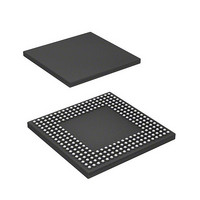HD6417720BP133BV Renesas Electronics America, HD6417720BP133BV Datasheet - Page 173

HD6417720BP133BV
Manufacturer Part Number
HD6417720BP133BV
Description
SH3-DSP, WITH USB AND LCDC, PB-F
Manufacturer
Renesas Electronics America
Series
SuperH® SH7700r
Datasheet
1.R8A77210C133BAV.pdf
(1478 pages)
Specifications of HD6417720BP133BV
Core Processor
SH-3 DSP
Core Size
32-Bit
Speed
133MHz
Connectivity
FIFO, I²C, IrDA, MMC, SCI, SD, SIO, SIM, USB
Peripherals
DMA, LCD, POR, WDT
Number Of I /o
117
Program Memory Type
ROMless
Ram Size
16K x 8
Voltage - Supply (vcc/vdd)
1.4 V ~ 1.6 V
Data Converters
A/D 4x10b; D/A 2x8b
Oscillator Type
Internal
Operating Temperature
-20°C ~ 75°C
Package / Case
256-BGA
Lead Free Status / RoHS Status
Lead free / RoHS Compliant
Eeprom Size
-
Program Memory Size
-
- Current page: 173 of 1478
- Download datasheet (10Mb)
SH7720 Group, SH7721 Group
3.5
3.5.1
This LSI has eight data registers (A0, A1, X0, X1, Y0, Y1, M0 and M1) and one control register
(DSR) as DSP registers (figure 3.3).
Four kinds of operation access the DSP data registers. The first is DSP data processing. When a
DSP fixed-point data operation uses A0 or A1 as the source register, it uses the guard bits (bits 39
to 32). When it uses A0 or A1 as the destination register, guard bits 39 to 32 are valid. When a
DSP fixed-point data operation uses a DSP register other than A0 or A1 as the source register, it
sign-extends the source value to bits 39 to 32. When it uses one of these registers as the
destination register, bits 39 to 32 of the result are discarded.
The second kind of operation is an X or Y data transfer operation, MOVX.W, MOVY.W. This
operation accesses the X and Y memories through the 16-bit X and Y data buses (figure 3.4). The
register to be loaded or stored by this operation always comprises the upper 16 bits (bits 31 to 16).
X0 or X1 can be the destination of an X memory load and Y0 or Y1 can be the destination of a Y
memory load, but no other register can be the destination register in this operation. When data is
read into the upper 16 bits of a register (bits 31 to 16), the lower 16 bits of the register (bits 15 to
0) are automatically cleared. A0 and A1 can be stored in the X or Y memory by this operation, but
no other registers can be stored.
The third kind of operation is a single-data transfer instruction, MOVS.W or MOVS.L. These
instructions access any memory location through the LDB (figure 3.4). All DSP registers connect
to the LDB and can be the source or destination register of the data transfer. These instructions
have word and longword access modes. In word mode, registers to be loaded or stored by this
instruction comprise the upper 16 bits (bits 31 to 16) for DSP registers except A0G and A1G.
When data is loaded into a register other than A0G and A1G in word mode, the lower half of the
register is cleared. When A0 or A1 is used, the data is sign-extended to bits 39 to 32 and the lower
half is cleared. When A0G or A1G is the destination register in word mode, data is loaded into an
8-bit register, but A0 or A1 is not cleared. In longword mode, when the destination register is A0
or A1, it is sign-extended to bits 39 to 32.
The fourth kind of operation is system control instructions such as LDS, STS, LDS.L, or STS.L.
The DSR, A0, X0, X1, Y0, and Y1 registers of the DSP register can be treated as system registers.
For these registers, data transfer instructions between the CPU general registers and system
registers or memory access instructions are supported.
Tables 3.14 and 3.15 show the data type of registers used in DSP instructions. Some instructions
cannot use some registers shown in the tables because of instruction code limitations. For
R01UH0083EJ0400 Rev. 4.00
Sep 21, 2010
DSP Data Operation Instructions
DSP Registers
Section 3 DSP Operating Unit
Page 113 of 1414
Related parts for HD6417720BP133BV
Image
Part Number
Description
Manufacturer
Datasheet
Request
R

Part Number:
Description:
KIT STARTER FOR M16C/29
Manufacturer:
Renesas Electronics America
Datasheet:

Part Number:
Description:
KIT STARTER FOR R8C/2D
Manufacturer:
Renesas Electronics America
Datasheet:

Part Number:
Description:
R0K33062P STARTER KIT
Manufacturer:
Renesas Electronics America
Datasheet:

Part Number:
Description:
KIT STARTER FOR R8C/23 E8A
Manufacturer:
Renesas Electronics America
Datasheet:

Part Number:
Description:
KIT STARTER FOR R8C/25
Manufacturer:
Renesas Electronics America
Datasheet:

Part Number:
Description:
KIT STARTER H8S2456 SHARPE DSPLY
Manufacturer:
Renesas Electronics America
Datasheet:

Part Number:
Description:
KIT STARTER FOR R8C38C
Manufacturer:
Renesas Electronics America
Datasheet:

Part Number:
Description:
KIT STARTER FOR R8C35C
Manufacturer:
Renesas Electronics America
Datasheet:

Part Number:
Description:
KIT STARTER FOR R8CL3AC+LCD APPS
Manufacturer:
Renesas Electronics America
Datasheet:

Part Number:
Description:
KIT STARTER FOR RX610
Manufacturer:
Renesas Electronics America
Datasheet:

Part Number:
Description:
KIT STARTER FOR R32C/118
Manufacturer:
Renesas Electronics America
Datasheet:

Part Number:
Description:
KIT DEV RSK-R8C/26-29
Manufacturer:
Renesas Electronics America
Datasheet:

Part Number:
Description:
KIT STARTER FOR SH7124
Manufacturer:
Renesas Electronics America
Datasheet:

Part Number:
Description:
KIT STARTER FOR H8SX/1622
Manufacturer:
Renesas Electronics America
Datasheet:

Part Number:
Description:
KIT DEV FOR SH7203
Manufacturer:
Renesas Electronics America
Datasheet:










